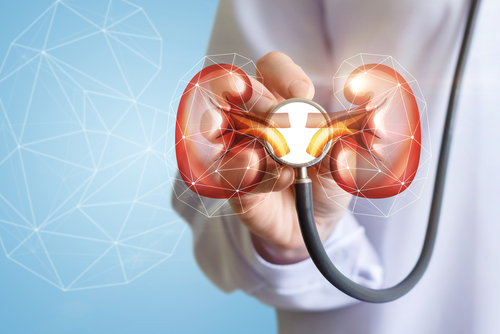Health, Financial Impact of Acute Kidney Injury Similar With or Without Sjögren’s
Written by |

In-hospital mortality, the length of a hospital stay, and hospitalization charges for people with acute kidney injury and Sjögren’s syndrome are no different from those without Sjögren’s, a large-scale database analysis found.
An interesting finding of the analysis was that those with both conditions had lower rates of high blood potassium than those without Sjögren’s. Further research is needed to understand this protective mechanism.
The analysis, “Prevalence, Length of Stay, and Hospitalization of Acute Kidney Injury in Patients With and Without Sjogren’s Syndrome,” was published in the Canadian Journal of Kidney Health and Disease.
In addition to the immune system attacking the glands that make tears and saliva, Sjögren’s syndrome can also affect other parts of the body, including the joints, lungs, blood vessels, nerves, digestive organs, and kidneys.
Acute kidney injury (AKI) — a sudden loss of kidney function — has emerged as a significant cause of poor outcomes in people with autoimmune conditions. However, whether the outcomes of Sjögren’s patients with AKI differ from those with AKI but not Sjögren’s is unclear.
Researchers based at Wayne State University in Michigan examined the outcomes of acute kidney injury in 977,055 people with and without Sjögren’s syndrome by analyzing data extracted from the National Inpatient Sample (NIS) database — the largest database of inpatient hospital stays in the U.S.
The analysis focused on adults admitted to the hospital from 2010 to 2013 with a primary diagnosis of acute kidney injury; then, the team divided the study cohort into those with and without Sjögren’s.
Overall, AKI patients with Sjögren’s were relatively younger (a mean age of 65.7 vs. 69.2), and included a greater proportion of women (89.5% vs. 49.8%), consistent with a greater prevalence of Sjögren’s in women.
Sjögren’s syndrome patients also exhibited lower rates of hyperkalemia — elevated potassium in the bloodstream — complicating AKI admissions, than did those without the autoimmune condition.
“This might be explained by the previous predisposition of a patient with [Sjögren’s] to chronic [renal tubular acidosis],” the researchers wrote. Low potassium is a major consequence of renal tubular acidosis.
“Further research is needed to identify the underlying protective mechanisms associated with Sjogren’s that resulted in lower hyperkalemia,” they added.
After adjusting data to account for patients’ characteristics, the difference in-hospital mortality was not statistically significant between the Sjögren’s group and the AKI group without Sjögren’s, nor was the length of a hospital stay and hospital costs.
Higher rates of deep venous thrombosis (blood clots in veins), septic shock (systemwide infection), and pulmonary edema (excess fluid in the lungs) were reported in patients with Sjögren’s, but these findings did not reach statistical significance.
“[The] explanation of increased reporting of septic shock, [deep venous thrombosis], and pulmonary edema is most likely multifactorial, and it is beyond the scope of this article,” the researchers wrote.
“[Database] studies are still useful to study uncommon diseases like [Sjögren’s syndrome],” the team concluded. “Prospective studies are urgently needed to unravel the relationship between AKI and [Sjögren’s syndrome].”





